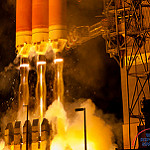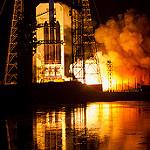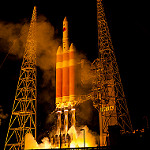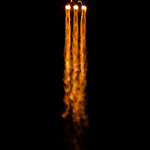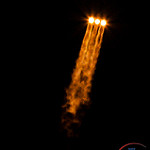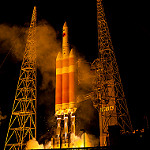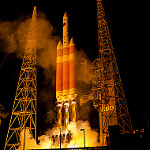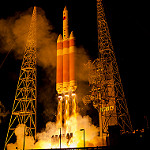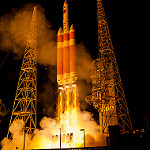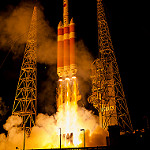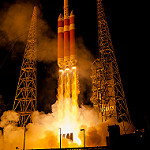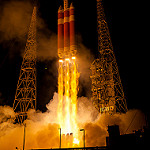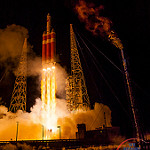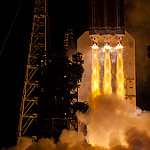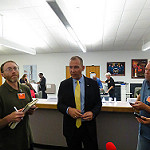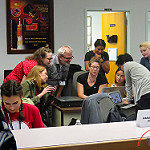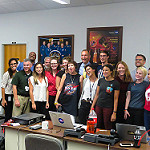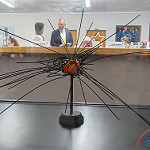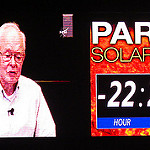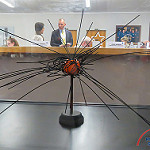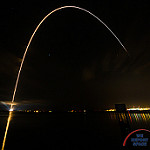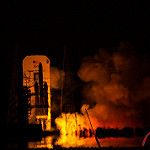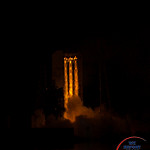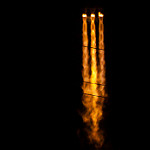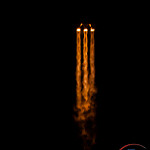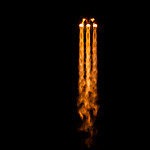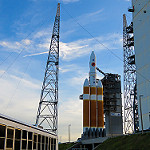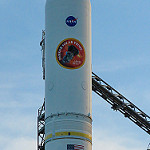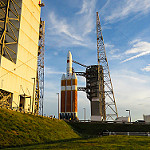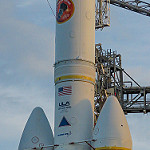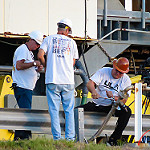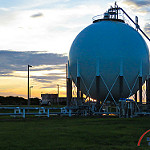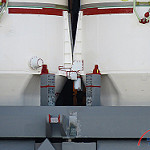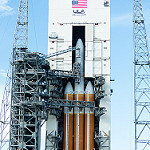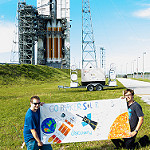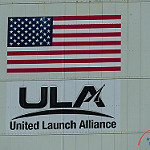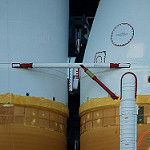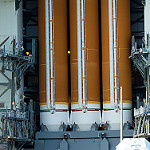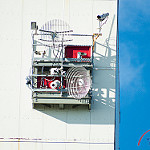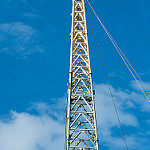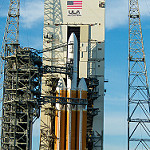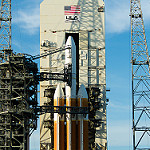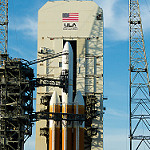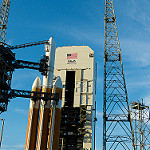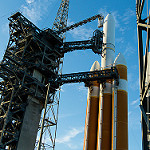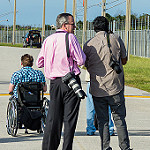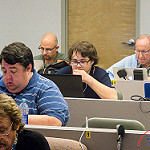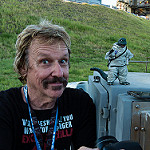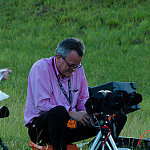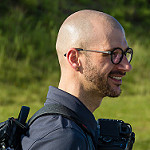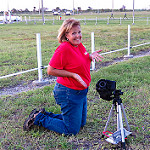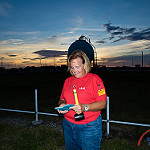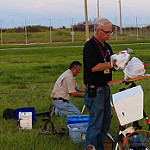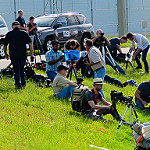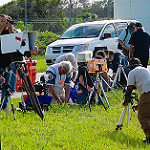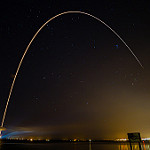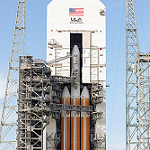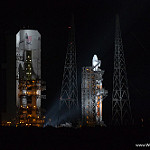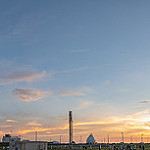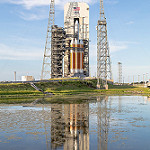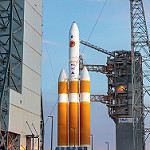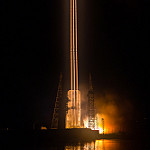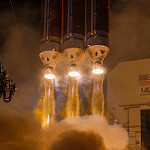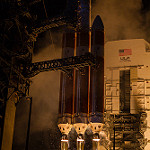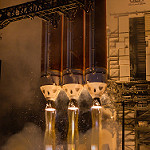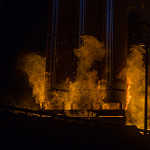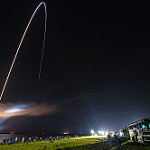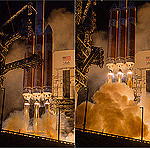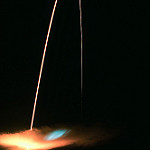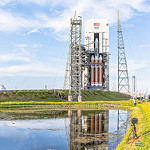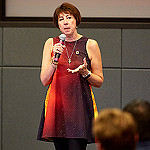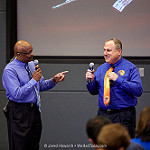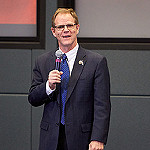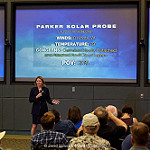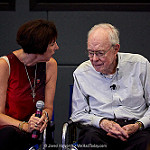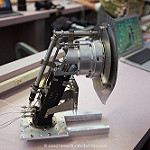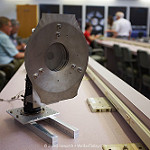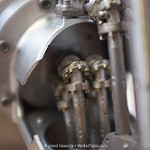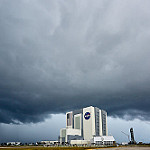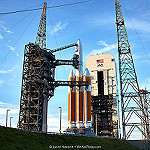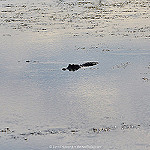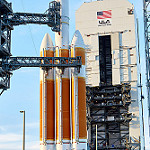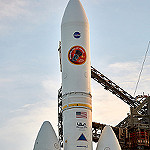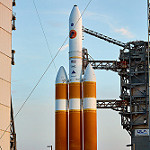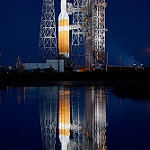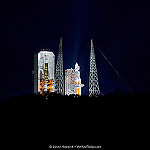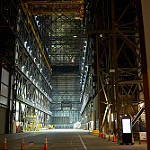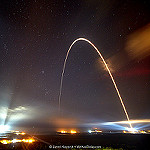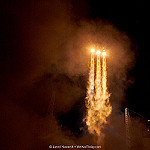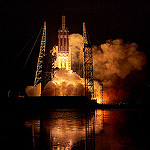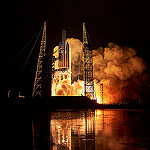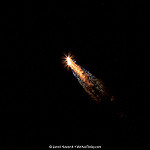Three Goals of Parker Solar Probe
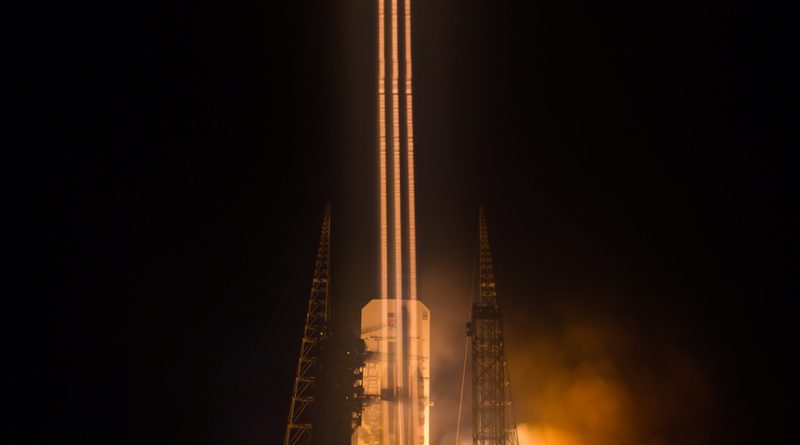
KENNEDY SPACE CENTER: Launched yesterday morning, the Parker Solar Probe begins a 7 year mission to study the Sun. The first milestone is eight weeks away when the probe uses its instruments to study Venus.
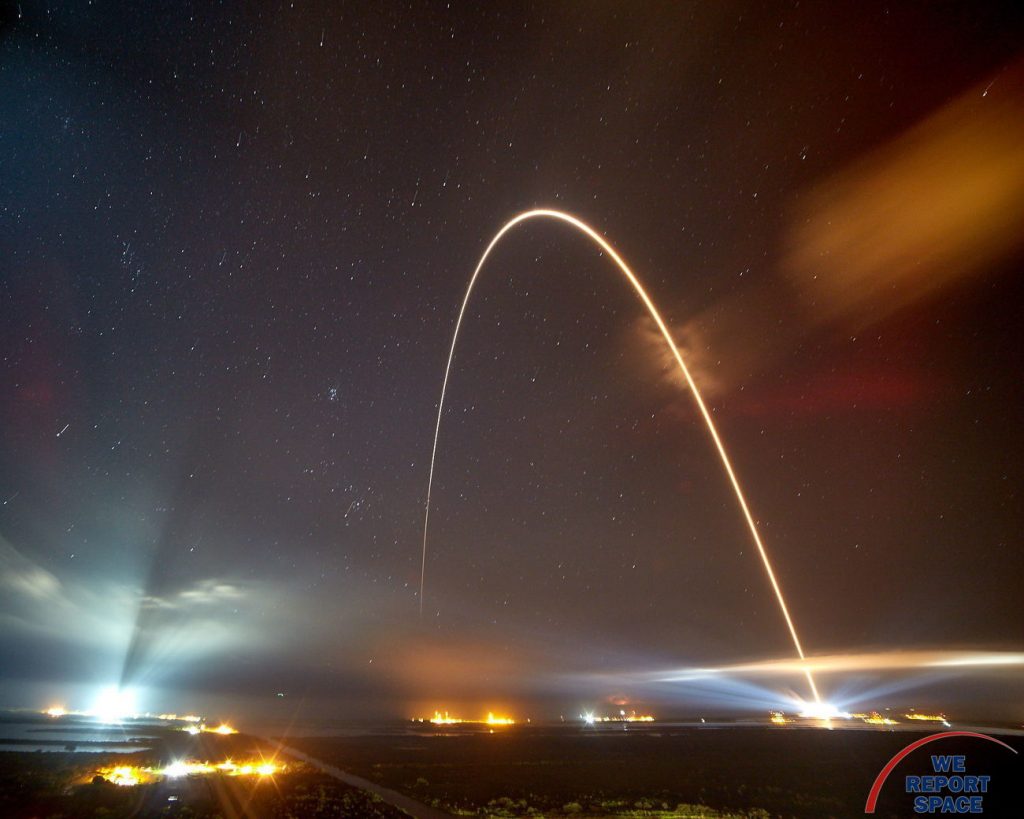
Thomas Zurbuchen, associate administrator of NASA’s Science Mission Directorate outlined three main goals for Parker Solar Probe. But he pointed at that the team will be working diligently to test all the instruments before the first fly-by of Venus. "In eight weeks, we will get all of the systems ready and orient the sensors. We will measure the emissions from Venus and its interaction with the solar wind. Venus gives us a chance to calibrate our instruments. The information we get from Venus will be the first highlight of the mission."
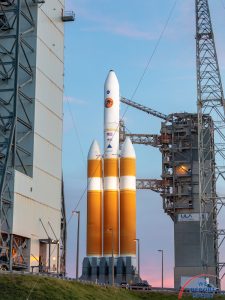
When asked if Venus is essentially a dress rehearsal for the first fly-by of the Sun in November 2018, Zurbuchen explained that the temperature of the gases from Venus are smaller than the sun. It will give the team a chance to measure the magnetic field, electric field and plasma emissions at Venus. "After Venus, we hang a left and begin our first pariapsis of the Sun. I expect the data on our first pass of the Sun will be the first papers in Science and Nature." Zurbuchen explained that Science and Nature is the premier journal for scientific discovery.
"The last time we were this close to the Sun was the Messenger Mission to study Mercury, using instruments from the 70's and 80's instead of modern instruments."
Three Goals for Parker Solar Probe
Goal 1: "The Scientific question about the heating of the Corona has been with us for far too long. If we meet here again in one year, in six months, that question has to be a different question than it is right now, because we are constrained by data that we don't have and that Parker Solar Probe will provide."
Goal 2: Rejuventate the Heliology Community. "This is really our chance to bring in the next generation of scientists who will study the Sun. They will be the ones who will take this community forward."
Goal 3: Space Weather: "The moment we understand how the interaction really works - the upper atmosphere of the Sun - we want to start building predictive models of space weather. Of all the variables in space weather, the corona is the least understood. The corona is ground zero of space weather and we need to start building that in to our models."
NASA Administrator Jim Bridenstine
Earlier in the week, NASA Administrator visited Brevard County as the Economic Development Commission of Florida's Space Coast hosted a roundtable between aerospace industry leaders and NASA Administrator Jim Bridenstine. While visiting with press after the event, Bridenstine commented on the Parker Solar Probe: "This is an important mission for us to understand really how the Sun works. There has been a lot of mystery surrounding it. Understanding the magnetic fields, understanding the coronal mass ejections and solar flares. How do we get better a predicting these?
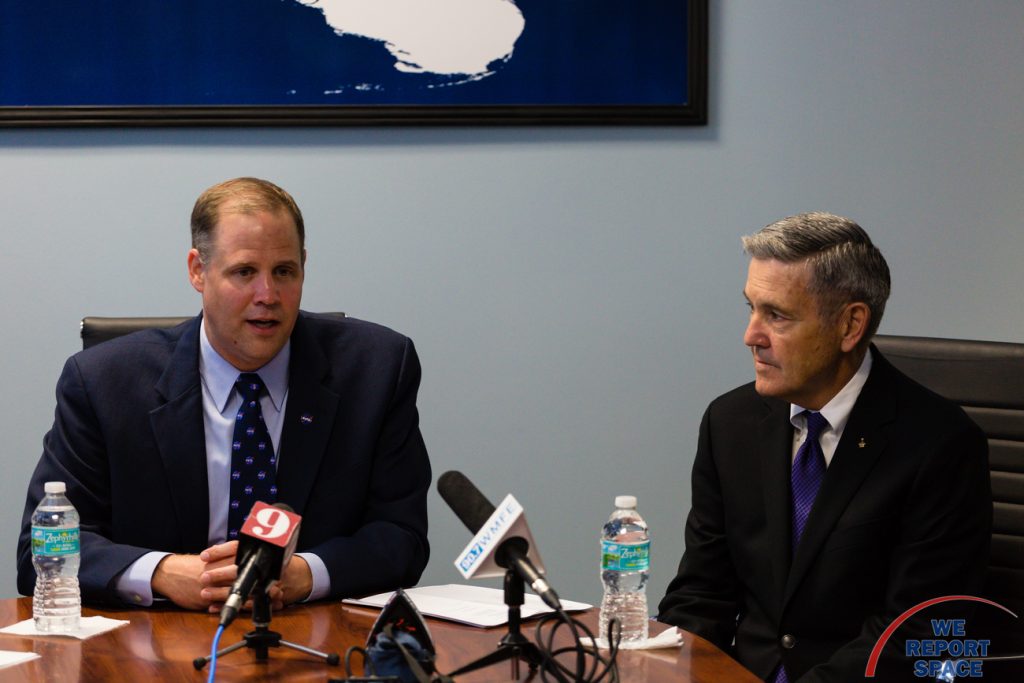
"As we launch crewed missions on SLS and Orion into deep space beyond the Van Allen Radiation Belts, our astronauts could be exposed to Coronal Mass Ejections or Solar Flares and we need to be able to predict both of these better. That really is what Parker Solar Probe will enable us to do.
"Of course, we want to predict it for our understanding of Earth as well. We think about the Carrington Event of the 1800's. If an event happened today of that scale, the power grid could shut down. Our cell phones would stop working. It could have a big impact on the banking industry in the United States. We have to be able to deal with another Carrington level event."
Dr. Eugene Parker
The witty Dr. Parker at age 91 attended the launch and pre-launch briefings. This is the first time that a mission namesake was still alive for the launch.
When discussing how the corona could be hotter than the photosphere, he first remarked, "it isn't because of sunshine, that's for certain!" He then demonstrated a way in which the human body could create a higher temperature at its extremities compared to its core, by rubbing his hands together. In other words, friction from solar winds could be "rubbing" together in the atmosphere to create higher temperatures.
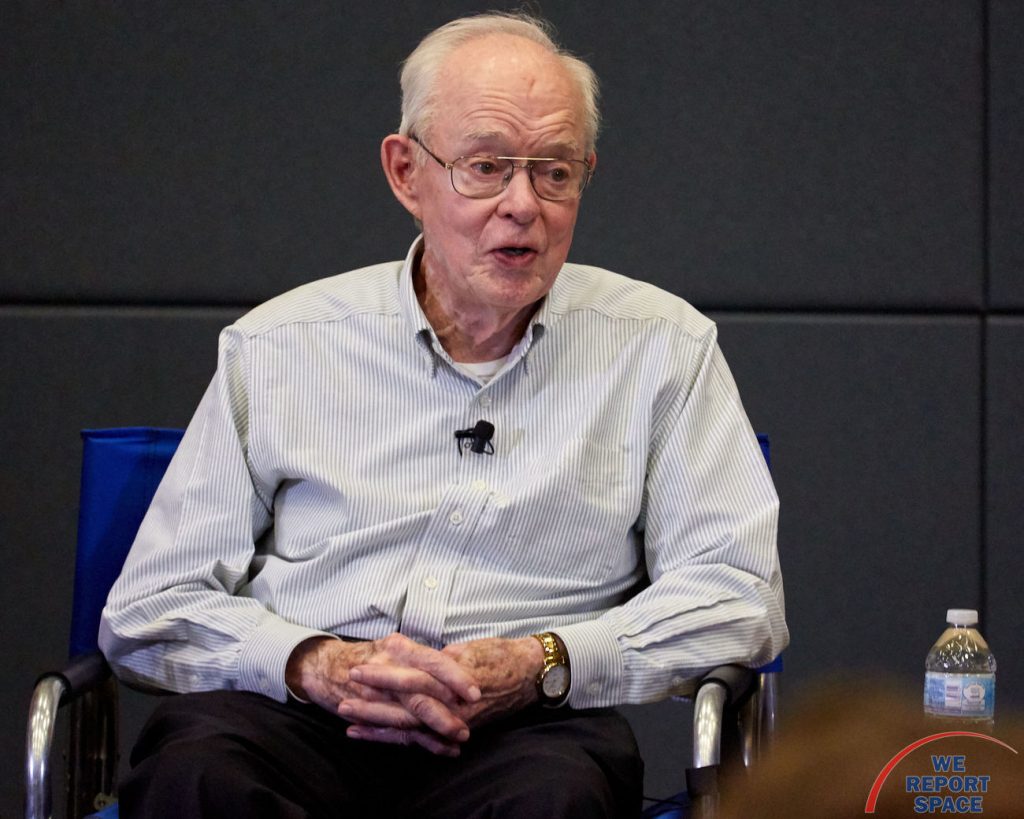
Before he settled on solar winds, he had read some papers about sunspots (and the fact that nobody knew why the existed) in the late 1940s. He figured, "we should be able to knock this one out in a couple of years." He noted that he has since moved onto easier problems to solve, and as of 2018, we still don't understand sunspots.
When he first attempted to publish a scientific paper on solar winds, it was rejected by two reviewers, but finally accepted by the editor, who was "skeptical I was right, but he could find no error with my arguments."
Launch Photos
Photo prints of this launch (and many others) can be purchased directly from the photographers at the following locations:
Michael Seeley's photos are available at Photos of Stuff.
Jared Haworth's photos are available for purchase at We Had Today Photography.
Photos
Delta IV Heavy / Parker Solar Probe (Bill and Mary Ellen Jelen)

Stunning, full color photo book covering every east coast launch spanning 2014-2015, including the first-ever powered landing of a SpaceX Falcon 9 rocket.
More Info